Charger Efest LUC
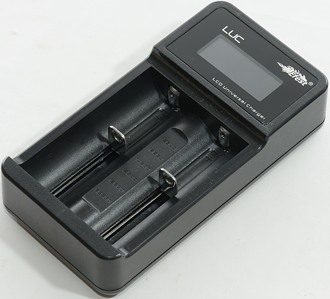
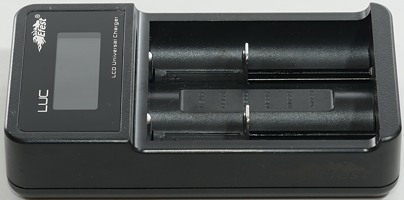
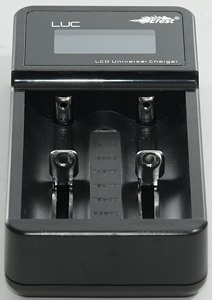
Efest has been building a line of chargers from single cell to four cell with fixed and variable current, this is a 2 channel LiIon charger with 2 charge currents and usb output.

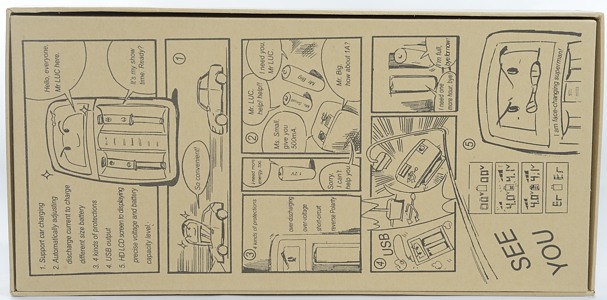
The charger comes in a brown cardboard box with a comic strip on the backside.

In the box is the charger, a power supply, car adapter, manual and a warranty card.
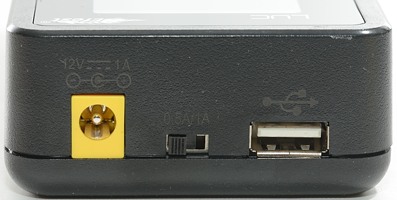
The charger is powered from 12 volt and has an usb output. The usb output will automatic turn on when loaded and can only be used on batteries, it will not activate when the charger is supplied with 12 volt.
The charge current selection is also on the backside with a weak marking, but the display compensates for that.
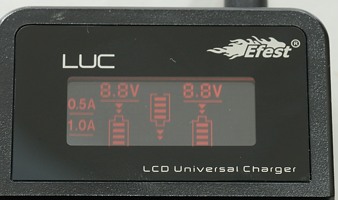
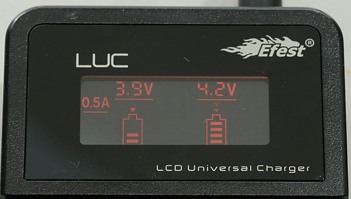
The display shows battery voltage and charge current. The small triangles are animated when charging. There is no charge done indicator, look for 4 bars in the battery symbol and no animation.
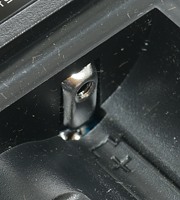
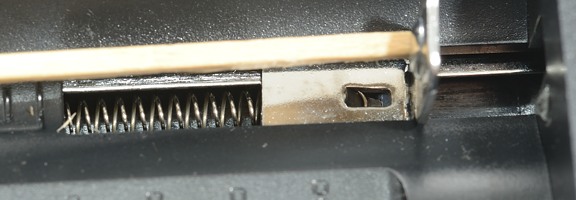
The slots uses the common slider design with bumps on the plus and minus connections, this makes the charger work with both flat and button top batteries. The sliders works good and support from 30mm to 71.5mm.
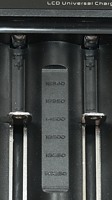
Between the two battery slot is listed the supported batteries.


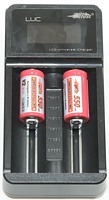
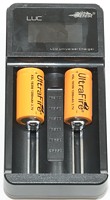
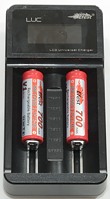
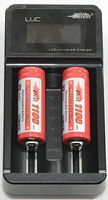
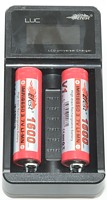
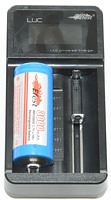
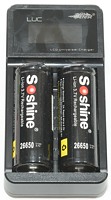
The charger can handle 70 mm long batteries including flat top cells.
Measurements
LiIon at 4.2V (ICR/IMR)
- When not connected to power it will discharges with up to 2mA on usb slot and 5mA on the other slot.
- When power is connected with a full battery, the charger will charge with 0.2mA on usb slot and 0.1mA on the other slot.
- It will restart if battery drops to 4.00 volt.
- It will restart charging on reinsertion of the battery or power cycling.
- The voltage meter can show from below 1.0 volt to 4.2 volt, the precision is about 0.1 volt.
- The charger will activate about 1.4 volt where it charges with 120mA/220mA.
- At about 2.9 volt the charge will switch to full charge current.
%20%231.png)
This is a good CC/CV charge curve with a termination around 30mA.
%20%232.png)
Slot two is the same, except the termination current is slightly higher.
%20%231.png)
%20%231.png)
%20%231.png)
Other capacities does also work fine.
%20%231.png)
Even my old 16340 cell.
%20%231.png)
Charging at 0.5A uses the same termination current.
%20%231.png)
A 14500 is charger perfectly at 0.5A.
%20%231.png)
A 18350 does also charge fine.
%20%231.png)
My old 16340 has a more normal looking charge curve at 0.5A, the end result is the same as at 1A.
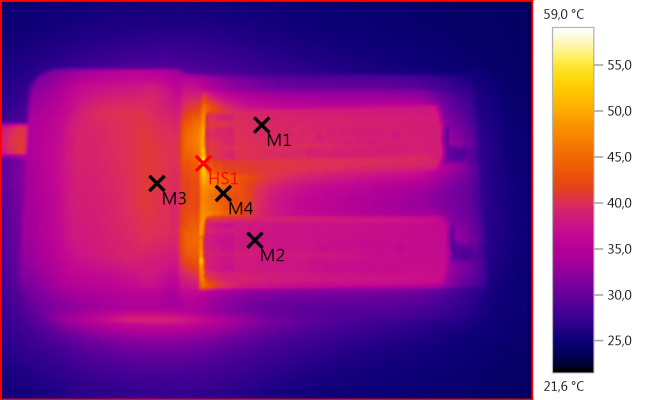
M1: 39,6°C, M2: 38,1°C, M3: 40,5°C, M4: 44,0°C, HS1: 59,0°C
As is often the case, the electronic inside the charger gets hot, but the batteries are kept at a moderate temperature.

M1: 39,4°C, M2: 37,3°C, M3: 31,2°C, HS1: 53,0°C
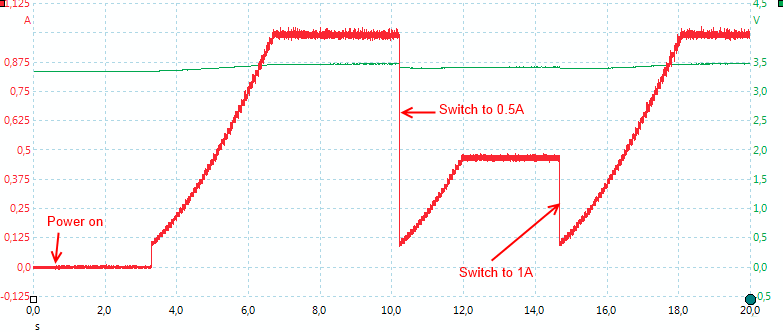
When powered on and when changing current the charger uses a slow ramp when setting the current.
USB output
- USB output is coded as Apple 1A
- USB output is disabled when the charger is powered.
- USB battery symbol drops to 3 bars below 3.9 volt.
- USB battery symbol drops to 2 bars below 3.7 volt.
- USB battery symbol drops to 1 bar below 3.5 volt.
- USB battery symbol flashes below 3.4 volt.
- There is no voltage readout while using usb output.
- USB output is will turn on automatic when loaded, it is very sensitive (Less than 0.05mA load needed).
- Only one slot can be used for usb output.
- The usb output is disabled when the battery drops below 3.1 volt.
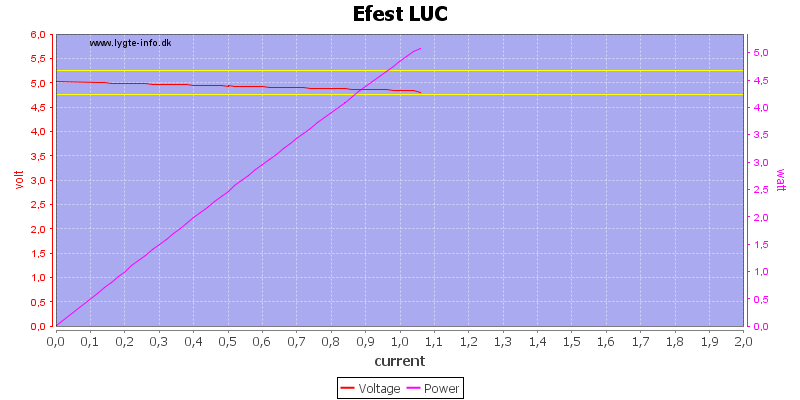
As usual I do a load sweep first, to see how the output works at different loads. The LUC turns off at 1.05A, this is not much margin above the rated 1A.
.png)
The usb output has trouble keeping the voltage up at 1A load.
The efficiency is not that good.
.png)
Reducing the load to 0.5A makes it possible to keep the voltage up and improves the efficiency.
.png)
.png)
Different batteries has different runtimes.

With 8mV rms noise and 60 mV peak-peak noise the output voltage is good.

With 1A load the rms noise increases to 11mV and the peak-peak to 800mV, again a good value.
Testing with 2500 volt and 5000 volt between mains and low volt side, did not show any safety problems.
Conclusion
The charger uses the correct algorithm has a good termination current and I like the design.
The usb output is fairly good, it has low noise, but the efficiency could be better.
I will rate it as a good charger.
Notes
The charger was supplied by Efest for review.
Here is an explanation on how I did the above charge curves: How do I test a charger
Read more about how I test USB power supplies and chargers





















%20%231.png)
%20%232.png)
%20%231.png)
%20%231.png)
%20%231.png)
%20%231.png)
%20%231.png)
%20%231.png)
%20%231.png)
%20%231.png)




.png)
.png)
.png)
.png)

